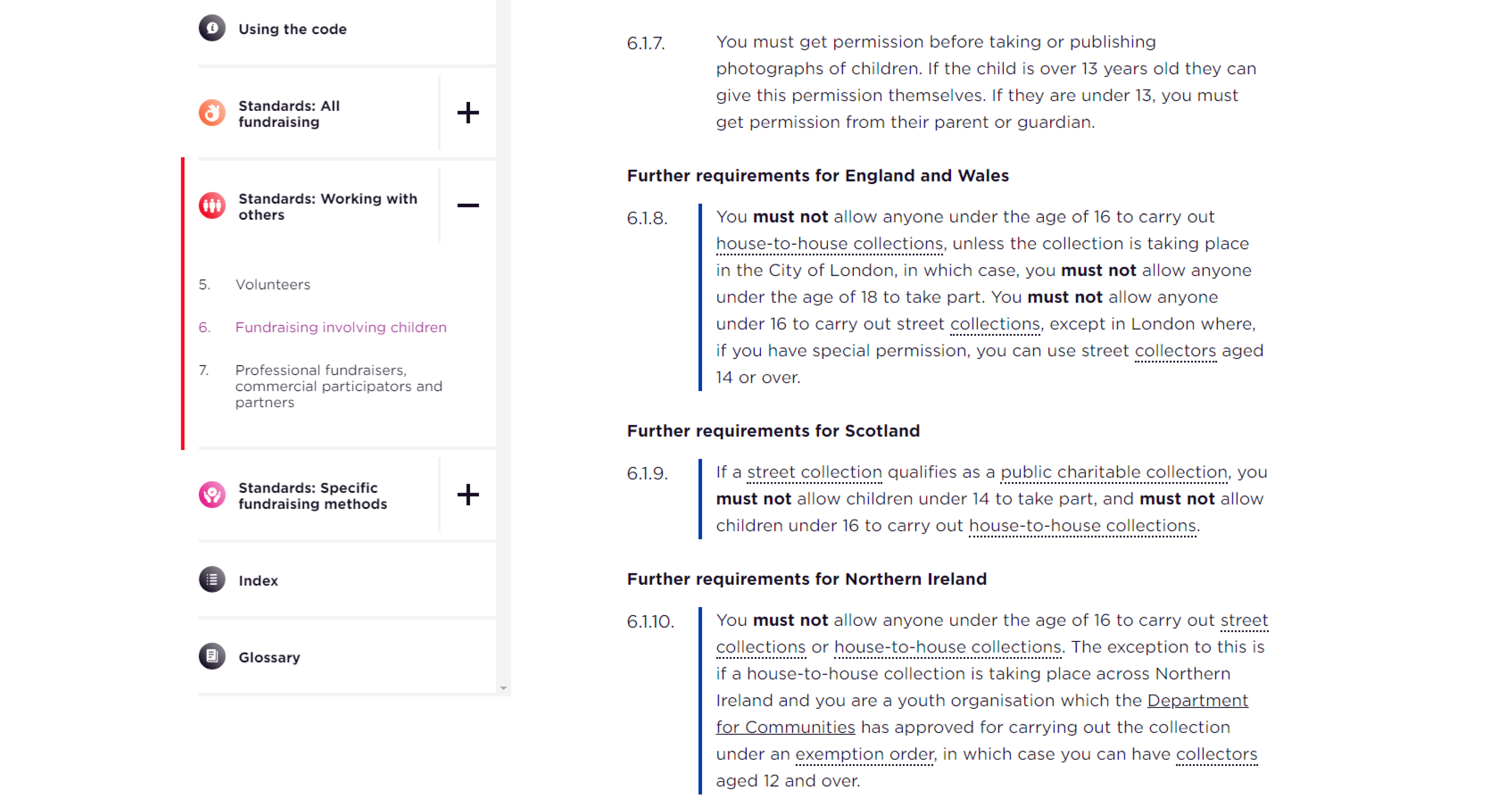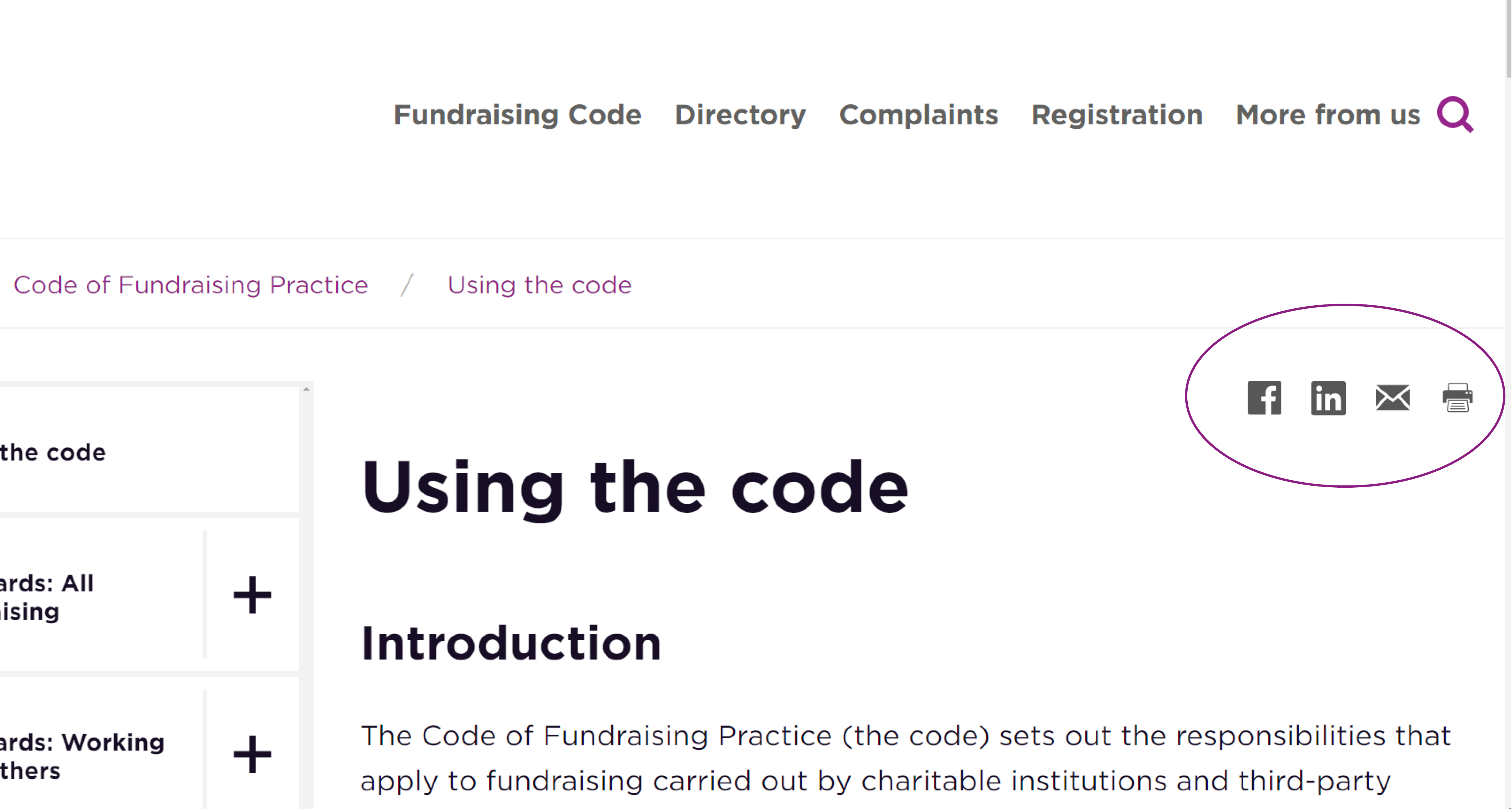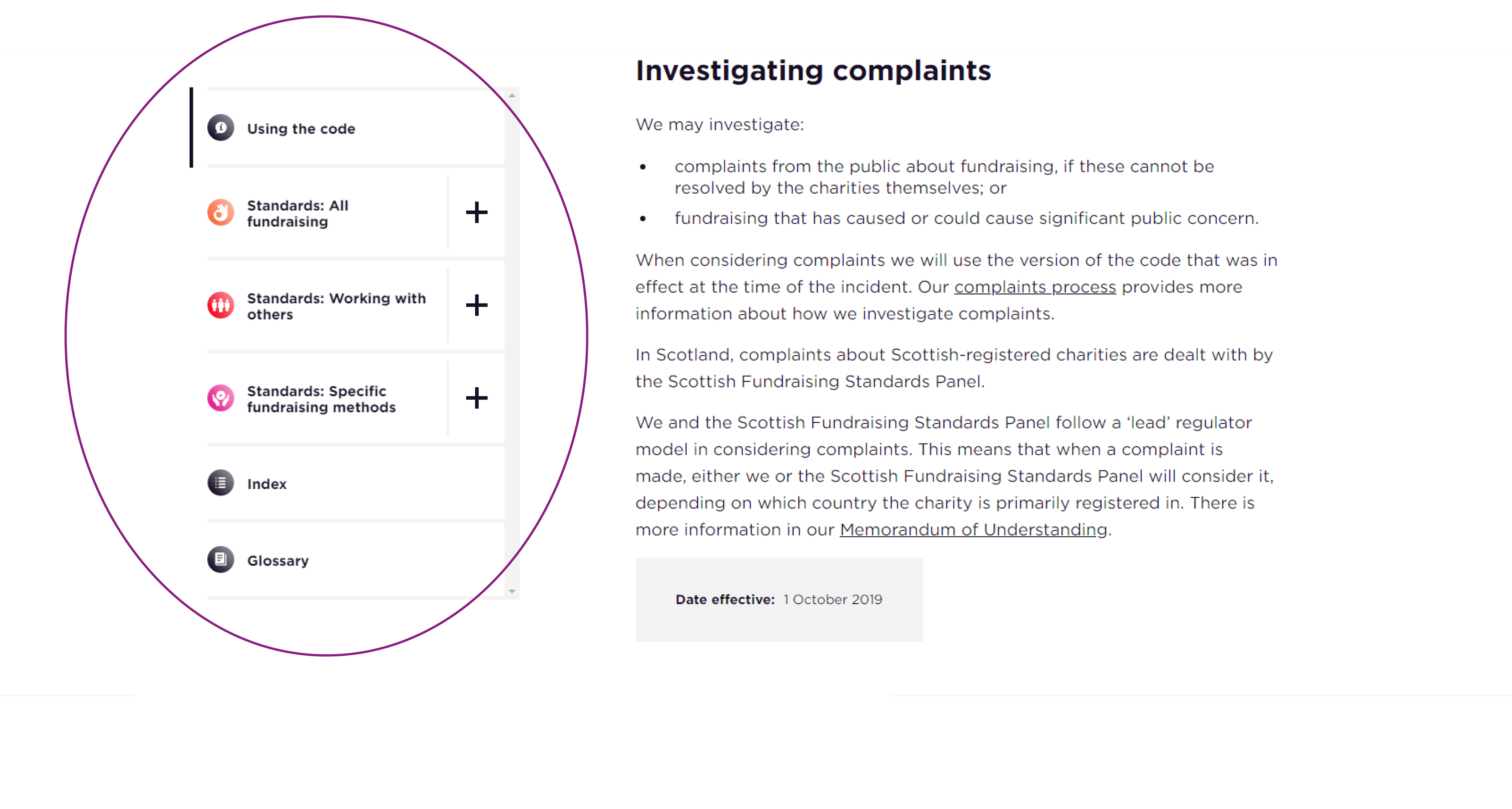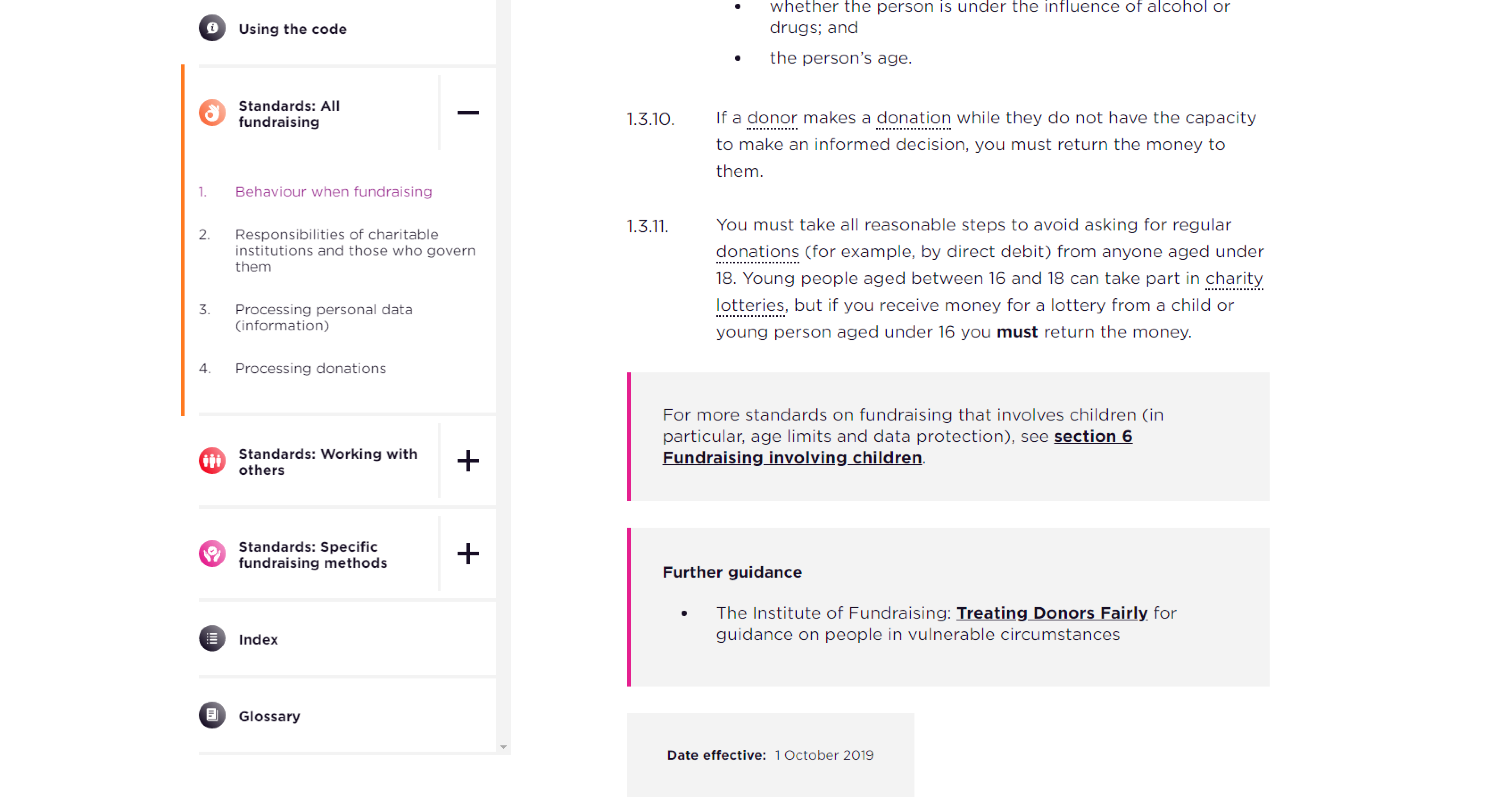By Priya Warner, former Head of Policy, Fundraising Regulator
You will have heard a lot over the last few months about the revised Code of Fundraising Practice, including how this is the first major redraft in almost a decade to improve its style, presentation, clarity and accessibility. If you want to know more about our work to revise the code, you can read my previous blog here.
Rather than re-stating what you hopefully know already, I’d like to focus in this blog on the work we’ve been doing to bring the code to life online.
The revised Code of Fundraising Practice came into effect earlier this month on 1 October alongside a new easier to use and navigate website version, which I hope you have had some time to explore.
When navigating the new website layout, here are some key points to note:
Regional differences
When you see a blue line running down the left hand side of a standard this tells you that the standard relates to a specific country.

Quick sharing links
On the top right hand corner of each page there are quick links to Facebook and LinkedIn, as well as email and printing options. This will help you to share relevant information with colleagues and others quickly.

Navigating the code
The left hand navigation menu is static on the page so that as you scroll up and down you will still see the navigation options, making it easy to move around the code.

Glossary definitions
Where a word appears in the glossary this is indicated with a dotted line – if you click on the glossary term a box will open containing the glossary definition.

Linking to other standards and guidance
We’ve hyperlinked to other parts of the code where relevant and also to external legislation and guidance.

We hope the improvements to our website makes it easier for you to use the code online.
For those of you who still want a hard copy, the PDF remains available online to download from the code homepage. However we will not be printing hard copies for circulation or purchase.
To help with the transition, we have also produced a mapping document and deletions and mergers log to show where old rules and sections have moved to, which will be available online until November 2019.
Thank you to all the organisations who engaged with us in the consultation process and in developing the new version of the code, and also to the many organisations who have contacted us to prepare themselves during the familiarisation period. If you have any further questions or require support applying the code, please contact our enquiries team for help.